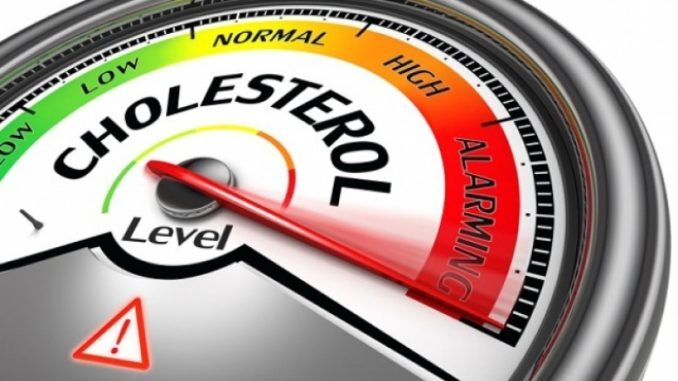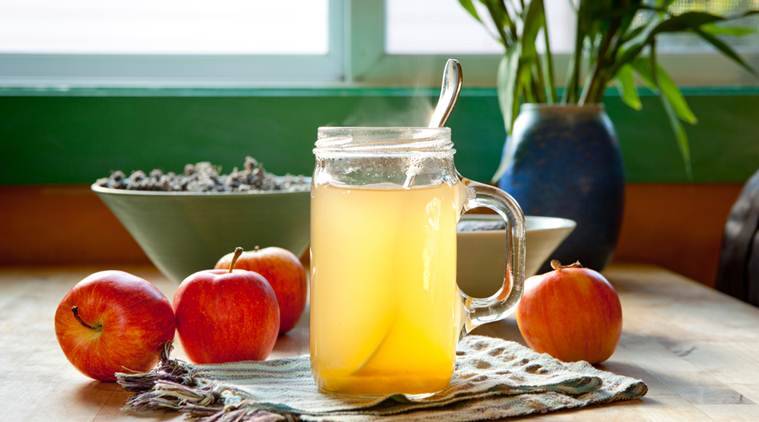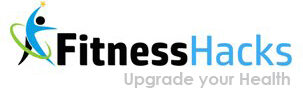
You have been following a ‘healthy’ low-fat diet and exercising to some extent – but your cholesterol levels keep rising and you may even have a fatty liver.
You are as fit as an athlete or you drink little or maybe even no alcohol at all and yet you have high cholesterol and even nonalcoholic fatty liver.
If this is your case, then you have come to the right place for the answers you are seeking.
There was always some mystery surrounding cholesterol. All fat people don’t have high cholesterol but there are those healthy-looking ones who have high cholesterol. The math just doesn’t add up here.
As a remedial measure, the first step suggested by the doctors will be to cut the fats from your diet and if that did not work (it rarely works), you will be given medication as now you have an increased risk of coronary heart disease.
But the real culprit has remained hidden all these years – Sugar!
Surprised? Yeah, even I used to think ‘fat’ was the culprit.
The US government in its 2015 dietary guidelines recommends a “healthy eating pattern with limited sugar” (1). Thank god that they have finally woken up!
They also eliminated the warnings about dietary cholesterol (300 mg), which for decades has been wrongfully blamed for causing heart disease.
The Cholesterol Myth: The Undisputed King Of All Myths
This ‘cholesterol myth’ comes from the World War ll era.
The ‘cholesterol is bad for you’ theory came from one prominent study undertaken by a doctor called Ancel Keys. The study was widely known as the ‘Seven Countries Study’ after which he came out with the hypothesis ‘diet-lipid-heart disease’ (2). He pointed out that countries where people ate more fat had higher rates of mortality from heart disease than the countries in which the fat consumption was low
But the actual truth is that he had conducted the study for 22 countries of which, he selected only 7. He left out the countries which ate a lot of fat but had low heart disease rates like Norway, Holland, and a few others. He also left out countries where fat consumption was low but had high heart attack rates, like Chile. So if he had included all the data, the study would have been a total failure.
He presented his altered findings at a doctor’s meeting at the World Health Organization in Geneva, in the year 1955. He must have been really good with his oratory skills to have managed to convince everyone around the place.
The surprising fact is that no other study has ever been able to establish a relationship between fat, cholesterol, and heart attack. The only thing the doctors have been doing was looking back and marching forward. Yes, we are all guilty of doing that.
The Real Culprit Got Scot-Free
In the 1970s, another doctor named John Yudkin published a study that correctly pointed out the true culprit- sugar (3).
He gained an international reputation for his book ‘Pure White and Deadly’ which pointed out that sugar was the main culprit responsible for dental caries, obesity, diabetes, and heart attack.
However, he came under heavy criticism from doctors like Ancel Keys. His findings would also have dealt a severe blow to the sugar industry and the manufacturers of processed foods. So the findings were somehow suppressed and the theory slowly died. But now, the truth of his findings is being revived.
HDL vs LDL
Cholesterol is a compound of the sterol type found in most body tissues.
Well, you would have heard that HDL is good cholesterol and LDL is bad cholesterol.
But the fact is that these are not even cholesterol!!!
Cholesterol is not soluble in water and does not mix well with blood. So the liver packages it with protein and other compounds creating a lipoprotein which then transports the cholesterol through the bloodstream. HDL stands for high-density lipoprotein and LDL for Low-Density Lipoprotein.
LDL carries cholesterol from the liver into the blood vessels and tissues. HDL carries the excess cholesterol back into the liver to recycle it. So, both are just carriers who are simply doing the jobs they are meant to do. However, total cholesterol is measured by measuring HDL, LDL, and triglycerides.
We Need Cholesterol
Let me list a few facts here first.
Cholesterol comes from two sources. The liver produces about 1000 to 2000 mg of cholesterol as our body requires it for lot many functions. The other source is dietary cholesterol from meat, poultry, full-fat dairy products, etc. An egg has only about 160 mg of cholesterol.
Our body has a feedback mechanism. So when you ingest only a low amount of cholesterol, the body has to produce more to make up the total required quantity. In fact, 75% of the cholesterol, on average, is produced by the body. Only 25% comes from ingested cholesterol.
So if the body so desperately needs cholesterol, can it be that bad?
Well, they make up most parts of the brain. Your cell membranes have an abundance of cholesterol. Cholesterol is one of the raw materials that make up hormones like testosterone, adrenal hormones, etc. It also helps you to make vitamin D.
Cholesterol actually acts as a band-aid for arteries that are corroding, developing inflammation, or getting ulcers. The cholesterol gets deposited over this and helps repair the damaged arteries. It’s like a scab over the wound. So clearly, cholesterol is not the culprit as we are led to believe.
Who is the Real Culprit?
The culprit is the one that caused the inflammation thereby damaging the arteries in the first place.
So who is this culprit?
It’s the damn sugar.
The most common cause of inflammation is Sugar. It is highly inflammatory and will not only spike your cholesterol levels but also your triglycerides.

Chronic inflammation in your arteries is what leads to atherosclerosis (arterial plaque and heart disease) – cholesterol does not cause this inflammation. Instead, the inflammation causes cholesterol to be deposited in the arteries along with other components like calcium which over a period of time hardens and narrows the arteries.
So instead of addressing the symptom, we should address the cause – the inflammation that is causing the arteries to get clogged up with cholesterol (4).
Other than sugar there are a few more players such as certain Polyunsaturated Fatty Acids (PUFA). Basically, oils such as Soybean oil, Corn oil, Canola oil, Margarine, etc have a high ratio (10:1) of Omega 6: Omega 3. An excess of Omega 6 fatty acids in the diet can be quite inflammatory (5).
The structure of PUFAs makes them chemically unstable and prone to oxidization. Therefore they are highly vulnerable to damage from heat, light, and oxygen. For example, if they’re used as frying oil over and over again, or just left out open for months they can get oxidized. Oxidized PUFAs are highly inflammatory and will spike your cholesterol levels.
To a lesser extent, adrenal problems can also cause inflammation. The adrenal gland secretes cortisol, the stress hormone. Cortisol also has anti-inflammatory properties (6). Over a period of time, chronic inflammation, caused by lifestyle factors such as poor diet and stress, keeps the cortisol levels soaring, wreaking havoc on the immune system.
So to minimize inflammation in your body and lower cholesterol levels – eliminate Sugar, PUFAs, and Stress!
Here’s a stunning eye-opener from Dr. Dwight Lundell (7):
“We physicians with all our training, knowledge and authority often acquire a rather large ego that tends to make it difficult to admit we are wrong. So, here it is. I freely admit to being wrong. As a heart surgeon with 25 years experience, having performed over 5,000 open-heart surgeries, today is my day to right the wrong with medical and scientific fact.
We opinion makers insisted heart disease resulted from the simple fact of elevated blood cholesterol. The only accepted therapy was prescribing medications to lower cholesterol and a diet that severely restricted fat intake.
Chronic inflammation in our blood vessels lead to heart disease, stroke, diabetes and obesity. The biggest culprits of chronic inflammation is the overload of simple, highly processed carbohydrates (sugar, flour and all the products made from them) and the excess consumption of omega-6 vegetable oils like soybean, corn and sunflower.”
Effects of Statin Drugs
While statins are able to bring down blood cholesterol levels, you must also know the price your body pays for this.
Statins, on average, cause muscle pain, headache, drowsiness, digestive problems, and difficulty sleeping (8). One of the side effects of statin drugs is memory loss and mental confusion as it lowers cholesterol and our brain requires cholesterol for its functioning. High blood sugar and type 2 diabetes are other possible side effects.
If you don’t have high cholesterol, then your chances of death from a heart attack is about 1 in 1000 people per year and if it’s about 300 then your chance increases to 2 in 1000. That is such a small fraction compared to the problems the drug will cause for sure in the long run.
So think twice before starting on Statin drugs. It is important to regulate cholesterols levels – do it by correcting your diet and lifestyle, not with drugs that create even more problems.
LDL and LDL values
Let’s now dig a little deeper to understand why HDL is considered the good cholesterol and LDL, the bad cholesterol, though neither of them is really cholesterol.
I previously mentioned that Cholesterol actually acts as a band-aid for arteries that are inflamed. It is the LDL that transports cholesterol to the arteries while HDL removes them from the arteries (10).
The LDL levels in our blood should ideally be less than 130. In 2004, a panel of 15 doctors lowered these values to 100 thereby putting over 8 million people on cholesterol medication overnight.
You have guessed it right. Many of these doctors had ties with various drug companies.
In a healthy male, the HDL value should be 40 or greater, and in females, it should be greater than 46. The total cholesterol values are not really significant, it’s the triglycerides that you need to watch out for.
Triglycerides
What are triglycerides? Basically, they are a type of fat found in the blood.
Your body converts any calories it doesn’t need to use right away into triglycerides which are stored in your fat cells. High levels of triglycerides (>150) are associated with an increased risk of heart disease (11). The ideal triglyceride value should be less than 150.
It’s actually very easy to correct high triglyceride levels. Stop your sugar intake, and reduce excess carbs, bread, pasta, and alcohol. You can get your triglyceride values within normal ranges in no time. It’s that simple.
Increase the HDL Levels
So how do you increase the good cholesterol, the HDL levels in your body?
Surprise!
You need to consume most of the things you were previously warned against – egg yolks, butter, cheese, coconut oil, etc. These foods raise HDL levels. In addition, rev up your physical activity, which is very important.
What increases the bad cholesterol is sugar. High amounts of sugar will cause your triglyceride levels to spike up. If I repeat it enough times, I hope it helps replace ‘fat is the culprit’ with ‘sugar is your enemy.
Get to know more about sugar:
Read: Understanding and Reversing Type 2 Diabetes Naturally
The Ratios
You have various indicators such as HDL to LDL ratio, HDL to total cholesterol, etc.
The one you need to watch out for is the HDL to triglyceride ratio as this is the best indicator of heart disease.
According to research (12) – From among various cholesterol tests, the elevation in the ratio of triglycerides to HDL was the single most powerful predictor of extensive coronary heart disease.
Divide your triglyceride values by HDL and if it is more than 4 (If lipid values are expressed as mg/dl), then you need to start controlling your diet immediately. The time for feasting on anything you please is over. If the value is less than 2, that’s really good – you can still indulge in a few occasional treats.
A study from the Stanford University School of Medicine recorded that a Triglyceride -HDL ratio of 3 or greater is a reliable predictor of insulin resistance (13). Insulin resistance is the driving factor that leads to type 2 diabetes.
Genetic Issues
There are a few cases of genetic cholesterol issues, but it’s very rare. Not as common as you are led to believe.
Even then there is no study that proves that cholesterol is bad for you. So there is no reason for you to jumpstart the medications. Weigh the pros and cons carefully.
Normal Modus Operandi
So what does a typical person do when he finds that his cholesterol is high?
He cuts down the fats in his diet, which will in turn lead to an increase in carb intake. He puts no restrictions on his sugar intake as this is not considered relevant.
What do you think will be the result?
The cholesterol levels climb even higher.
He runs to a doctor – who will be happy to put him on statin drugs.
We are all very familiar with this scenario.
As the heart surgeon, Dr. Dwight Lundell says (14):
“The only accepted therapy was prescribing medications to lower cholesterol and a diet that severely restricted fat intake. The latter of course we insisted would lower cholesterol and heart disease.
These recommendations are no longer scientifically or morally defensible. The discovery a few years ago that inflammation in the artery wall is the real cause of heart disease is slowly leading to a paradigm shift in how heart disease and other chronic ailments will be treated.
The long-established dietary recommendations have created epidemics of obesity and diabetes. Despite the fact that 25% of the population takes expensive statin medications and despite the fact we have reduced the fat content of our diets, more Americans will die this year of heart disease than ever before.”
The Action Plan: What To Do If Your Cholesterol Values Are High

The first thing is not to panic because this is totally curable.
- Stop eating sweets and bakery products completely.
- Limit your carbohydrate intake and avoid refined carbohydrates (maida) and sugars in your diet. I’m talking about packaged foods, pasta, bread, bagels, muffins, etc. You can however consume carbohydrates from fruits and vegetables, in moderation.
- Eat plenty of low-carb vegetables. 7-9 cups a day.
- Not more than 2 cups of tea/ coffee with ‘minimum or no sugar’ in a day.
- Don’t go overboard with fatty foods – trans fat and fried foods are still bad. Losing or gaining fat is dependent on your total calorie intake, irrespective of the source of your calories.
- Consume healthy fats such as eggs, meat, nuts, butter, vegetable oils like coconut oil, etc. [not PUFA oils with high Omega-6]
- Follow the normal diet of your region This means – eat what your grandparents used to eat. It’s best to avoid expensively, imported food products that are claimed to be healthier.
- Avoid eating out unless you know for sure that the food is healthy.
Additional Tips:

Correcting your diet is the most vital step. Without that nothing else you do is going to make any real difference. Once the basic diet is corrected by eliminating sugar in all its various forms, you can add the following steps as they have a significant impact on reducing cholesterol levels.
- You must add regular exercise to your daily routine as this not just helps lower your cholesterol, it also has innumerable other health benefits.
- An ayurvedic cholesterol remedy – crushed fresh garlic [6-8 cloves with a few drops of lemon juice and honey] taken early morning on an empty stomach is said to lower cholesterol levels naturally (15). This is something I personally follow and have found it to be quite effective.
- Apple cider vinegar is another natural medicine that is considered effective in managing cholesterol levels. Add a tablespoon of apple cider vinegar to a glass of warm water and have this before your main meals. There are many simple ACV recipes to make this drink more appealing.
- Niacin has been found to help lower triglycerides and LDL while raising HDL values in the blood (16). Take B-complex supplements which include Niacin (vitamin B3) though it’s best to get them from your diet. Natural food sources are milk, eggs, rice, fish, lean meats, and legumes.
Read more: 9 Scientifically Proven Health Benefits of Apple Cider Vinegar
Read more: 7 Apple Cider Vinegar Drinks That Help You Detox and Lose Weight

Natural healing is a slow process and you need to change your lifestyle altogether and follow it for at least a month for significant positive results. You will be surprised to see that your cholesterol numbers have started coming down.
Just remember one thing. You can never go back to your old ways after your cholesterol levels are back to normal.
